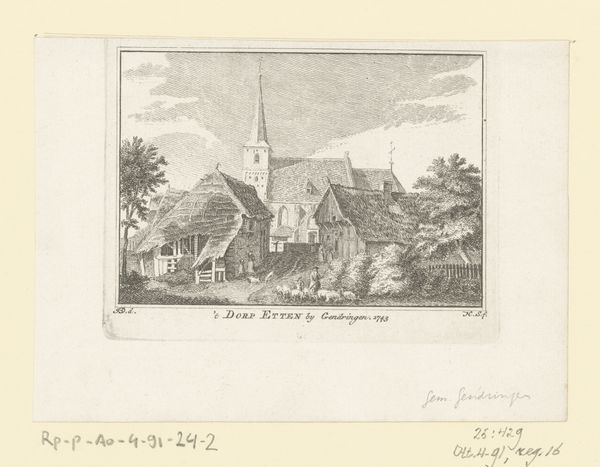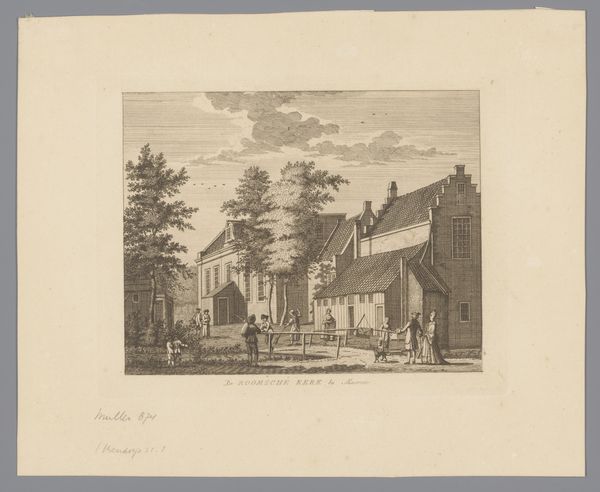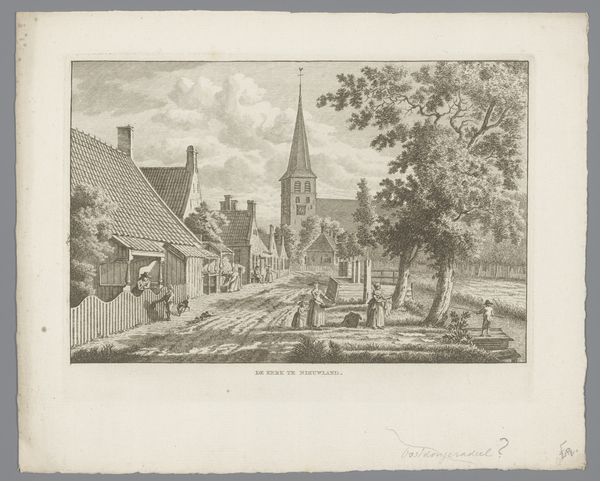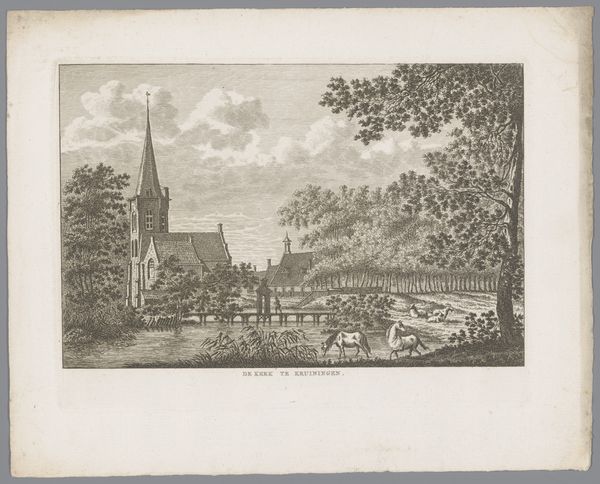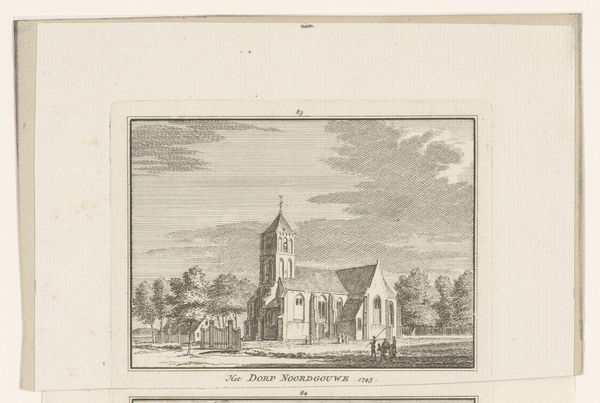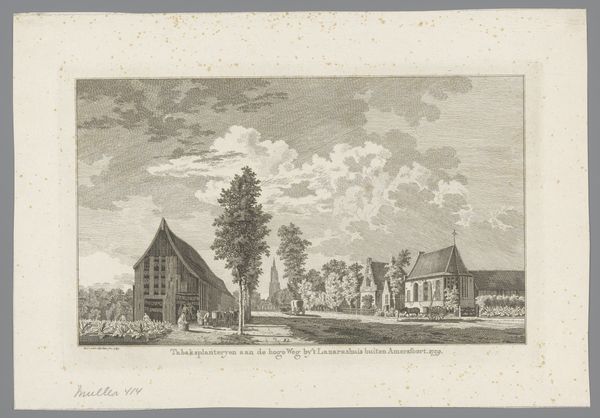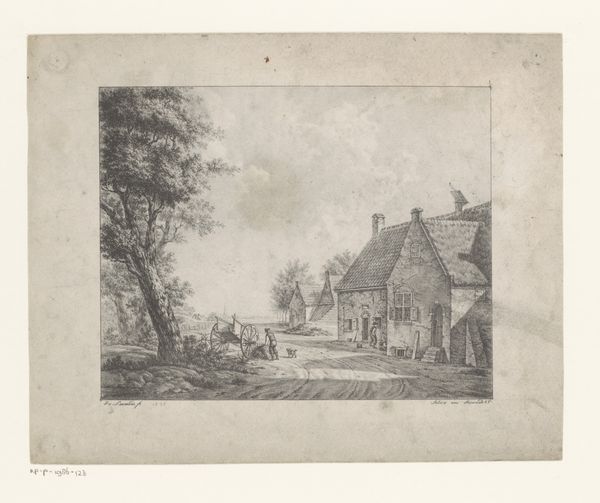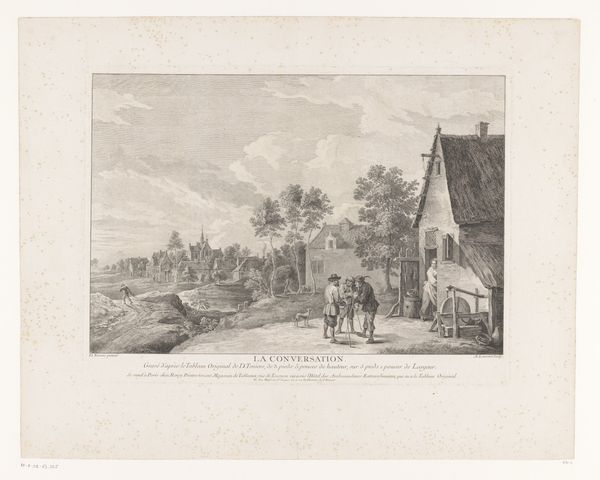
print, engraving
#
dutch-golden-age
# print
#
landscape
#
cityscape
#
engraving
#
realism
Dimensions: height 245 mm, width 345 mm
Copyright: Rijks Museum: Open Domain
Curator: Ah, isn’t this lovely? We’re looking at Wilhelmus van Groenewoud’s "Dorpskerk van Voorschoten," dating back to 1834. It's currently held here at the Rijksmuseum. A very peaceful, serene scene. What are your initial thoughts? Editor: It feels very… deliberate. The meticulous hatching in the engraving emphasizes the structure of everything – the church, the trees, even the reflections in the water. It's a landscape, yes, but really about built structures. Curator: Absolutely. The medium itself, printmaking, speaks to that desire for replication and order, doesn’t it? He's captured the scene with incredible precision. Notice how the towering church looms, yet the people are quietly fishing. It strikes me as the contrast between spiritual aspiration and earthly concerns. Editor: Right, but the 'earthly concerns' are all bound up in that church too, aren’t they? Look at how centrally positioned it is, how all paths, even that canal, lead to it or away from it. And that's no accident; it's literally etched into the composition! The work reminds me about the Dutch economy's investment and social importance to religion at the time, made visible by the buildings and daily habits depicted. Curator: It also feels nostalgic, a longing for the simple rural life—perhaps a constructed simplicity. What’s interesting is the deliberate inclusion of everyday folks. Not idealized figures, but individuals engaged in daily activities, grounding this somewhat lofty structure into a more humble and relatable sphere. Editor: Indeed! Look at the labor and resources poured into that steeple though; materials hauled, skilled stone masons employed. It signifies labor transformed into capital and social dominance through architecture, while figures engaged in everyday labour look upon this display. Curator: Perhaps the intention here was less a glorification of rurality and more an honest appraisal of the place the Church held in Dutch life and landscape in 1834. Something quiet and contemplative about accepting it as it is. Editor: Perhaps! Thanks to the choice of engraving as a material form, and the way Van Groenewoud presents this village so carefully, the image lets us contemplate what makes a landscape more than just scenery – buildings, sure, but also power, belief, and labour too. Curator: It gives one a lot to think about! A potent image—quiet but complex—reflecting an era gone by.
Comments
No comments
Be the first to comment and join the conversation on the ultimate creative platform.
